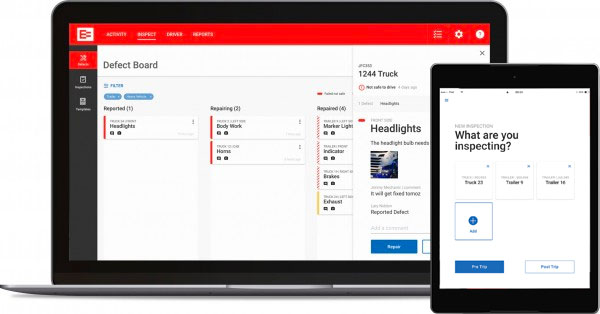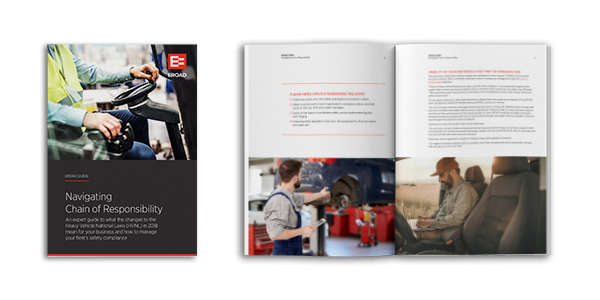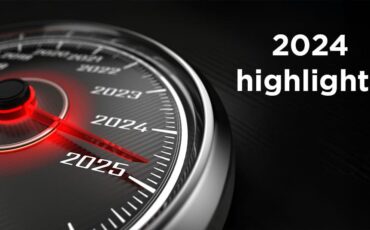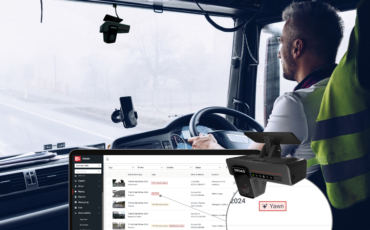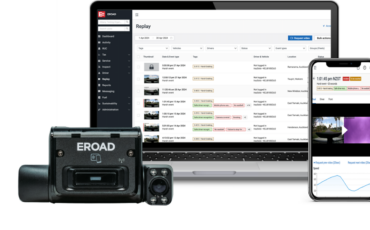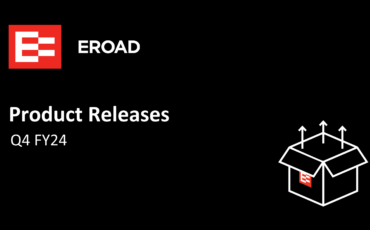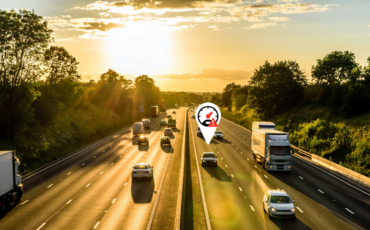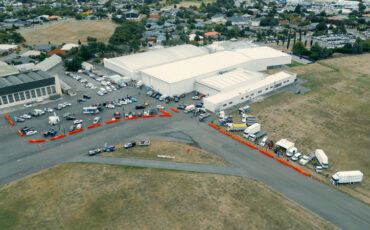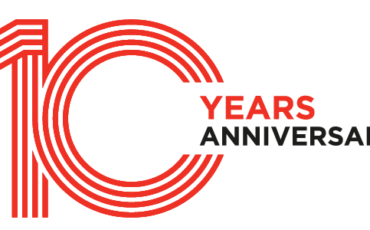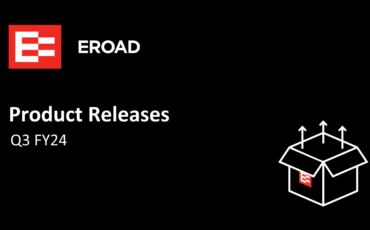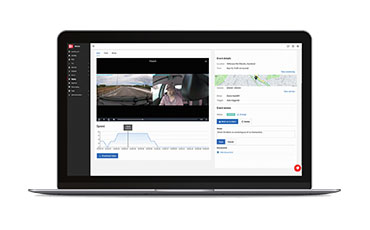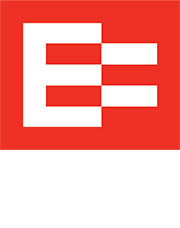How telematics can drive your Chain of Responsibility compliance
How telematics can drive your Chain of Responsibility compliance
How telematics can drive your Chain of Responsibility compliance
In 2018, a major amendment to Australia’s* Chain of Responsibility (CoR) legislation changed the way your business needs to manage the safety and operation of your heavy vehicles.
The new laws have more wide-ranging powers and tougher penalties for CoR breaches. It also means everyone with a role in your transport supply chain, both on and off the road, is collectively responsible for the safety of your transport operations.
Everyone, from your company directors and management team(s) to your consigners, dispatchers, loaders, contractors, partners and drivers, now shares responsibility for being CoR compliant.
*Currently only applies to selected States in Australia
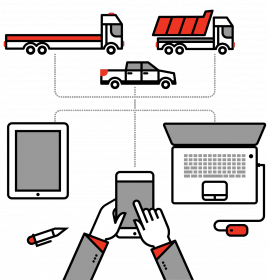
What CoR aims to achieve
The Chain of Responsibility legislation has been developed to ensure your business stays safe and compliant across four core areas:

You can read more about the changes here.
Good systems and accurate data ensure your fleet’s CoR compliance
The key to fleet safety and your Chain of Responsibility compliance is having the right tools, systems and processes in place to monitor your operations properly to ensure they comply.
International safety expert and EROAD Health and Safety Stakeholder Manager Chris Evans and EROAD’s Senior Product Manager Rebecca Kemp explain why:
“Telematics really helps effectively manage road safety and your fleet properly,” says Chris.
“It’s quite difficult to manage maintenance requirements or scheduling constraints on a spreadsheet these days. So, at the very least, you need something that records when your vehicles are regularly inspected and maintained and drivers aren’t overworked,” he says.
“Technology, such as EROAD’s fleet management software, can achieve that for you and also assist with CoR compliance in many other ways, such as providing better visibility of your partner or sub-contractors.”
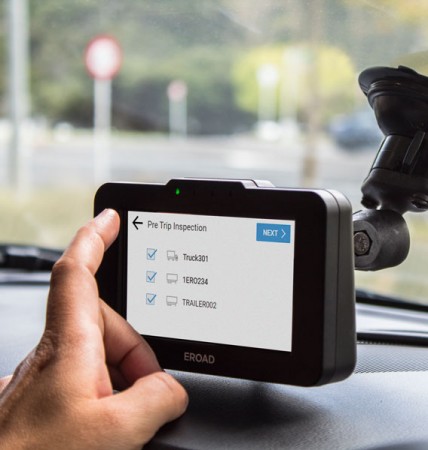
How EROAD’s technology can help with your CoR compliance
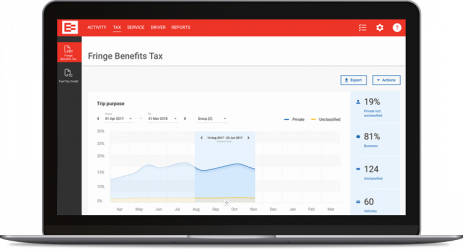
EROAD’s Share feature, which gives users the same digital visibility of a sub-contractor’s fleet that a business has of their own, is a good way to ensure your CoR obligations are being met.
“As a result, you can easily see what’s happening with your sub-contractors. Similarly, you can share a view of your driver behaviour history to a major supplier to show how they are doing in regards to complying with speed limits while on the job.
You can also schedule reports within EROAD’s telematics software that can be sent to other parties in the supply chain. This ensures it’s not just a one-off audit; you can maintain an ongoing view of your businesses performance as you go.”
Rebecca also says EROAD’s dedicated electronic vehicle inspection app help address the legislation’s new focus on vehicle standards.
Cut out the paperwork to easily manage CoR!
“We’ve all seen those depots where there are piles of vehicle inspection checklists with identified faults just waiting for someone to action,” she says.
“Managing this process manually can be a long process which presents a lot of risk to the business. It’s common for drivers to get frustrated when they report a problem or fault but nothing happens.
Now they can use an app, like EROAD’s Inspect to carry out one-off and scheduled inspections to ensure that on-going maintenance is being carried out in a timely manner,” she says.
“With EROAD’s Inspect, all drivers need to do is take a picture of a fault and it immediately gets sent to the right person to action. This means the lead time for repairs is dramatically shorter. That makes it easier to comply with CoR, saves money and makes for safer vehicles on the road.”
Technology, people and processes make CoR compliance easy
As handy as it is, Rebecca warns technology can’t be left to stand on its own; it requires people willing and able to use it effectively.
“Telematics can provide some amazing insights into your fleet and run it more efficiently, which can help proactively manage safety. But you need to be clear about what you want to achieve with it.
Telematics can provide a wealth of information on your fleet – but it’s not a ‘set and forget’ solution. It needs to be part of a broader approach to workplace safety,” she says.
“Meanwhile, you have to ensure you have all bases covered, carry out regular audits and programmes, have assurance activity and regularly assess risk. It’s also important to keep safety at the forefront of everyone’s minds, to ensure it is embedded in your culture.”
How technology can enhance your safety culture
The key to employing technology is that it must be used as a positive tool.
“If you’re using telematics like ‘big brother’ rather than as a continual improvement tool, it won’t work because people will resent it. So we always recommend using EROAD’s fleet management software as a tool that empowers drivers and helps them self-learn.”
For example, EROAD’s system issues alerts, in real-time, about key individual driving behaviours and issues, including speeding, sharp acceleration, harsh braking and cornering. These applications give the driver feedback while behind the wheel to help self-regulate.
“Systems that give instant feedback let drivers change and adapt their driving style and behaviour. This is what helps change their attitude or approach.
What works best is if you can offer some bonus or incentive for driving well. Firstly, it reduces the cost of fuel, lowers maintenance costs and, ultimately, reduces the risk of accidents. It also becomes a positive challenge for drivers, as individuals and as a team.”

EROAD creates a safer driving culture
Employing technology, such as EROAD’s Inspect app, encourages drivers in your supply chain to take more responsibility for ongoing maintenance.
Carrying out daily maintenance checks not only ensures you’re compliant with the CoR legislation, it also helps to:
- Deliver cost efficiencies
- Improve assurance levels
- Minimise liabilities
- Reduces vehicle downtown.
If you do all that, then you develop a culture that breeds not only positivity, but productivity and additional efficiencies.”
